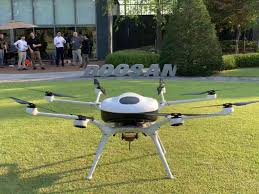
Breaking News
 What ACTUALLY Happens When You Pour Vinegar in a Washing Machine?!
What ACTUALLY Happens When You Pour Vinegar in a Washing Machine?!
 Silver Madness: CME Margin Spike + What It Means Next - Mike Maloney
Silver Madness: CME Margin Spike + What It Means Next - Mike Maloney
 The 2025 Forensic Audit: Why the Silver Market Just Collapsed
The 2025 Forensic Audit: Why the Silver Market Just Collapsed
 How To Build A 100% SOLAR Food Dehydrator. Simple Off Grid Food Preservation - No Electricity.
How To Build A 100% SOLAR Food Dehydrator. Simple Off Grid Food Preservation - No Electricity.
Top Tech News
 Laser weapons go mobile on US Army small vehicles
Laser weapons go mobile on US Army small vehicles
 EngineAI T800: Born to Disrupt! #EngineAI #robotics #newtechnology #newproduct
EngineAI T800: Born to Disrupt! #EngineAI #robotics #newtechnology #newproduct
 This Silicon Anode Breakthrough Could Mark A Turning Point For EV Batteries [Update]
This Silicon Anode Breakthrough Could Mark A Turning Point For EV Batteries [Update]
 Travel gadget promises to dry and iron your clothes – totally hands-free
Travel gadget promises to dry and iron your clothes – totally hands-free
 Perfect Aircrete, Kitchen Ingredients.
Perfect Aircrete, Kitchen Ingredients.
 Futuristic pixel-raising display lets you feel what's onscreen
Futuristic pixel-raising display lets you feel what's onscreen
 Cutting-Edge Facility Generates Pure Water and Hydrogen Fuel from Seawater for Mere Pennies
Cutting-Edge Facility Generates Pure Water and Hydrogen Fuel from Seawater for Mere Pennies
 This tiny dev board is packed with features for ambitious makers
This tiny dev board is packed with features for ambitious makers
 Scientists Discover Gel to Regrow Tooth Enamel
Scientists Discover Gel to Regrow Tooth Enamel
 Vitamin C and Dandelion Root Killing Cancer Cells -- as Former CDC Director Calls for COVID-19...
Vitamin C and Dandelion Root Killing Cancer Cells -- as Former CDC Director Calls for COVID-19...
Fuel cell drone makes an epic ocean crossing

The exercise was the result of a collaboration between Texas-based drone development company Guinn Partners, Georgia-based Skyfire Consulting, the US Department of Health, and drone manufacturer Doosan Mobility Innovation – the latter supplied the aircraft, a hydrogen fuel cell-powered DS30 octocopter.
Utilizing its temperature-controlled payload system, the drone was used to transport live bacteria samples from a hospital on the Caribbean island of St. Croix to a testing facility on the neighboring island of St. Thomas. This involved crossing 43 miles (69 km) of open ocean. Upon successfully reaching its destination, the copter reportedly still had almost 30 minutes of flight time left on its fuel cell.
According to Guinn Partners, it can ordinarily take up to a week before patients' biological fluid samples are transported between the two islands by manned aircraft – in the case of illnesses such as Dengue fever, the infection can progress to dangerous levels within that amount of time. Because using a drone is much cheaper and simpler, though, samples could conceivably be sent to St. Croix immediately.



